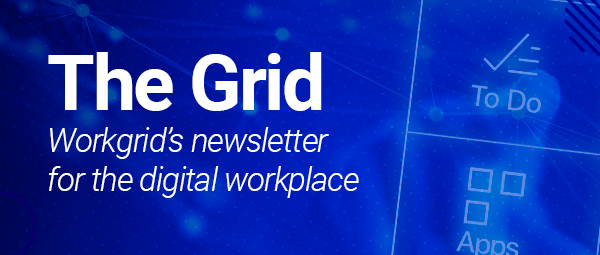One of the primary factors contributing to perpetual digital friction in the workplace comes from a legacy good intentions; (as we all know) the road to Hell is paved with similar intent.
The goal to create a modern digital work environment that promotes productivity - for all employees - has led to digital workplaces cluttered with ‘trash’. The tech landscape slowly grows more fragmented over time; new and tenured employees alike wade in cultural learned helplessness.
‘The Elephant and the Tree’
‘Learned Helplessness’ is a psychological phenomenon, first defined by Martin Seligman and Steven Maier in the 1960s. It occurs when individuals feel powerless to change their circumstances despite the presence of opportunities for improvement.
Perhaps you are familiar with the ‘Elephant and the Tree/Twig’ parable. This story illustrates learned helplessness beautifully. In the parable, a young happy baby elephant is tied to a small twig by a thin rope. At this stage it is sufficient to restrain the elephant. He pulls against his binds, he wishes to be free. He struggles, but he can’t break the bonds - or the tree.
Over time, as the elephant grows older and stronger, he no longer pulls against the tree. Even though he could snap it quite easily. It never tries escape because it has learned to believe that it cannot. This learned helplessness prevents the elephant from challenging its restraints, ripping the tree from the ground and breaking free.
Within the context of employee applications and resources, learned helplessness is reflected in the reluctance (or inability) of employees to seek out better ways of working; even when tools, technologies, and strategies are readily available to enhance their experience.
Think about this for a moment. When an new employee enters the organization they are ‘shown’ around. Their path for collaborating, foraging for information, communicating - have all been dictated for them. The signals, notifications, pings - they have very little control over. While there are personality types which may complain or ask questions about the insanity of work processes - most will accept their digital detention: app hopping, waiting, searching, and wasting their time.
Factors Contributing to Learned Helplessness in the Workplace
Overwhelming Choices + Established Practices:
When new employees join an organization, they are often introduced to a pre-determined set of tools, applications, and resources. This orientation, combined with inadequate training on how to use these resources effectively, can lead employees to accept the status quo rather than seeking improvements. This acceptance of established practices can be further reinforced by a workplace culture that discourages questioning or speaking up.
Fear of Rocking the Boat:
Both long-standing employees and leaders may be resistant to adopting new tools, processes, or technologies out of fear that it could threaten their job security, station, or disrupt their established routines. This apprehension hinders many from exploring and embracing innovative ways of working.
Lack of Autonomy/Ownership:
Employees often have little control over the selection and implementation of workplace tools and technologies, which can result in feelings of disempowerment and helplessness in improving their work experience.
Overtime there is a natural impact to employees downstream
Reduced Productivity and Innovation:
Digital Friction cripples productivity, but continued learned helplessness leads to stagnation. We accept the status quo. As employees become complacent and fail to explore new and more efficient ways of working it adds to eroded organizational innovation.
Lower Employee Engagement:
Employees who feel helpless and disenfranchised in their work environment are less likely to feel engaged and invested in their work; after all they have no say in creating a better work for themselves. This results in decreased job satisfaction and higher turnover rates.
What can we do?
Enhance productivity, focus, and engagement by integrating your digital workplace with the help of a digital assistant. Learn more about how Workgrid helps reduce digital friction and improve the employee experience.




